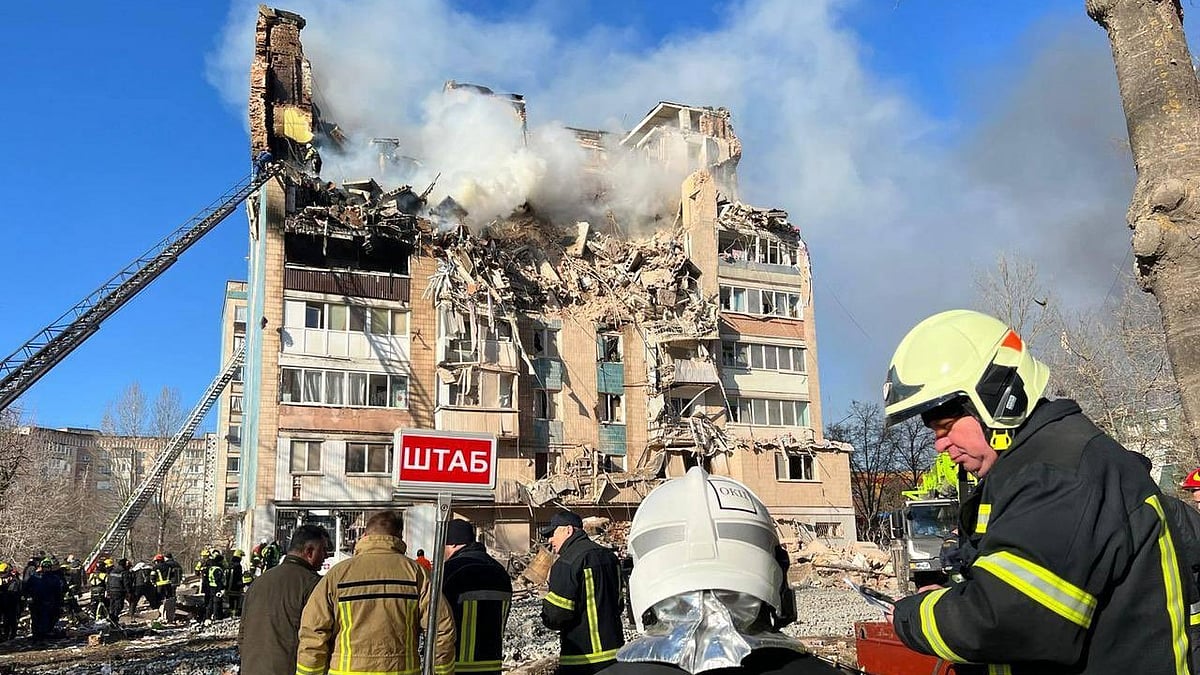World
European allies resist reported US push for Ukraine to accept sweeping concessions
Several European capitals insist any settlement must avoid “capitulation” as US reportedly presses Kyiv to accept peace blueprint

European governments pushed back on Thursday against a reported US-driven initiative that would ask Ukraine to surrender more territory and limit parts of its military — conditions long deemed unacceptable by Kyiv’s closest allies, Reuters has reported.
According to two sources familiar with the discussions, Washington has signalled to Ukrainian President Volodymyr Zelenskyy that Ukraine must engage with a draft peace framework prepared by the United States. The proposal, the sources told Reuters, includes both territorial concessions and restrictions on Ukraine’s armed forces. They requested anonymity due to the sensitivity of the matter.
The Reuters report says diplomatic pressure is emerging at a delicate moment for Kyiv. Ukrainian forces are retreating on several fronts, while Zelenskyy’s administration battles a destabilising corruption scandal that led to parliament dismissing two cabinet ministers on Wednesday. The combination of military strain and political turbulence has heightened anxiety about Ukraine’s negotiating position.
The Kremlin, meanwhile, sought to downplay any sense of movement.
“Consultations are not currently underway. There are contacts, of course, but there is no process that could be called consultations,” Russian spokesman Dmitry Peskov said, according to Reuters. He reiterated Moscow’s long-standing demand that any settlement must address what it calls the “root causes” of the conflict — a phrase the Kremlin uses to justify its insistence on further concessions from Kyiv.
European Union foreign ministers meeting in Brussels said they had not been formally briefed on the US blueprint, which remains undisclosed. Still, their reactions made clear that proposals involving severe compromises from Ukraine would face resistance.
Published: undefined
“Ukrainians want peace — a just peace that respects everyone’s sovereignty, a durable peace that cannot be called into question by future aggression,” French foreign minister Jean-Noël Barrot told reporters. “But peace cannot be a capitulation.”
His remarks echoed repeated European concerns, reported by Reuters, that forcing Kyiv into major concessions would reward Russian aggression and hurt the continent’s long-term security.
The White House has not publicly commented on the alleged plan. US Secretary of State Marco Rubio wrote on X that Washington would continue developing “a list of potential ideas for ending this war based on input from both sides”, adding that a durable peace would require “difficult but necessary concessions” by both Moscow and Kyiv.
Published: undefined
In a show of continued military engagement, a US Army delegation led by Army secretary Dan Driscoll and Chief of Staff Randy George arrived in Kyiv and met Ukrainian commander Oleksandr Syrskyi. Reuters said the group was expected to see Zelenskyy later on Thursday. Syrskyi stressed that defending Ukrainian airspace, striking deeper into Russia and stabilising troop positions remained essential prerequisites for any lasting peace.
War intensifies as winter looms
On the ground, Russia has escalated its nightly bombardments. Ukrainian authorities said 26 people were killed and 22 remain missing after a strike levelled an apartment block on Wednesday — one of the deadliest single attacks in recent months. In Ternopil, far from the front line, crews used cranes to pull apart smouldering debris while residents laid toys and flowers for the victims.
Published: undefined
“What kind of ‘strategic target’ is this?” said Ihor Cherepanskyi, searching for his great-grandmother’s body.
Another Russian strike left 400,000 people without electricity. Ukraine, in turn, said it hit two Russian oil refineries.
Meanwhile, fighting in the east is pushing Russian forces closer to capturing Pokrovsk, which would be Moscow’s first significant city seizure in nearly two years. The two sides also exchanged the remains of soldiers this week — Ukraine received 1,000 bodies, while Russia received 30.
A grinding war with no easy end in sight
Russia, which launched its full-scale invasion in 2022 and occupies nearly a fifth of Ukraine, insists that Kyiv must cede additional land, accept neutrality and limit its armed forces. Ukraine says such terms amount to surrender.
After Ukraine’s dramatic early-war successes, the front has stagnated across a 1,000-km line, with Russian and Ukrainian troops engaged in slow, attritional warfare dominated by drones and artillery.
US President Donald Trump, who returned to office promising to “end the war quickly”, has shifted US policy away from unequivocal support for Ukraine. Though he has also signalled impatience with Moscow — cancelling a summit with Vladimir Putin and imposing fresh sanctions on Russian oil — his administration is now shaping proposals that diverge sharply from Europe’s position.
With winter approaching and battlefield losses mounting, the diplomatic rift between Washington and Europe over how much Ukraine should concede may soon become impossible to ignore.
With media inputs
Published: undefined